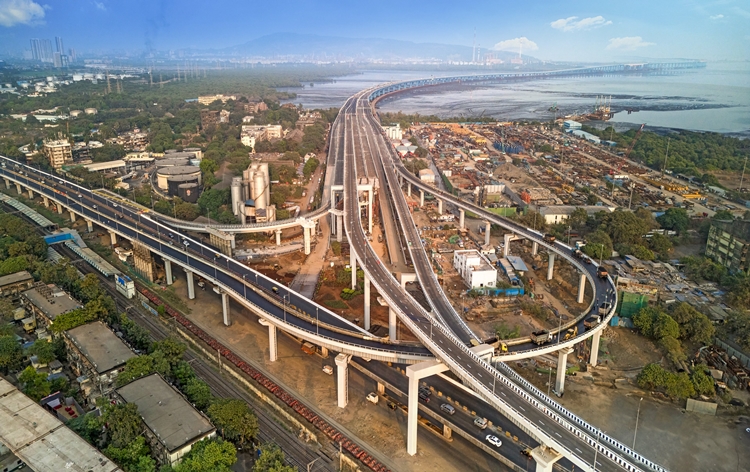Prime Minister Narendra Modi will inaugurate and travel on Atal Bihari Vajpayee Sewri- Nhava Sheva Atal Setu today in Maharashtra. ‘Atal Setu’, is the longest bridge in India and also the longest sea bridge in the country. It is going to improve ‘ease of mobility’ for the citizens.
To strengthen urban transport infrastructure and connectivity, Mumbai Trans Harbour link (MTHL), now named ‘Atal Bihari Vajpayee Sewri – Nhava Sheva Atal Setu’ has been built. The foundation stone of the bridge was also laid by the Prime Minister in December, 2016.
Atal Setu has been constructed at a total cost of more than Rs 17,840 crore. It is about 21.8 km long 6-lane bridge having about 16.5 km length over sea and about 5.5 km on the land. It will provide faster connectivity to Mumbai International Airport and Navi Mumbai International Airport and will also reduce the travel time from Mumbai to Pune, Goa and South India. It will also improve connectivity between Mumbai Port & Jawaharlal Nehru Port.
PM Modi Modi will also inaugurate the 27th National Youth Festival at Nashik in Maharashtra today. He will also address the youth of the nation on the occasion of National Youth Day marking the birth anniversary of youth icon Swami Vivekananda.
The theme of the five-day festival is- “MYBharat-ViksitBharat@2047- By the Youth, For the Youth.” Various states will showcase cultural programmes of their diverse cultural heritage. This year, road safety awareness events will be conducted at major cities and 750 district headquarters of the country on the occasion.
During the day long visit to Maharashtra, PM Modi will also dedicate to the nation and lay foundation stones of multiple development projects in Mumbai and Navi Mumbai.
Prime Minister will inaugurate, dedicate to the nation and lay the foundation stone of multiple development projects worth more than Rs 12,700 crore in the public programme in Navi Mumbai.
PM Modi will also lay the foundation stone of the underground road tunnel connecting Eastern Freeway’s Orange Gate to Marine Drive. The 9.2 Km tunnel will be built at a cost of more than Rs 8700 crore and will be a significant infrastructure development in Mumbai, which will reduce travel time between Orange Gate and Marine Drive.
He will also dedicate phase 1 of the Surya regional bulk drinking water project to the Nation. The project, developed at a cost of more than Rs 1975 crore, will provide drinking water supply to the Palghar and Thane district of Maharashtra, benefiting about 14 lakh population.
During his visit to Maharashtra, PM Modi will dedicate about Rs 2000 crore railway projects to the Nation. These include the dedication of ‘Phase 2 of Uran-Kharkopar railway line’ which will enhance connectivity to Navi Mumbai as suburban services running between Nerul/Belapur to Kharkopar will now be extended to Uran. PM Modi will also flag off the inaugural run of the EMU train from Uran railway station to Kharkopar.
Other rail projects that will be dedicated to Nation include a new suburban station ‘Digha Gaon’ on the Thane-Vashi/Panvel Trans-harbour line and the new 6th Line between Khar Road & Goregaon railway station. The projects will benefit the thousands of daily commuters in Mumbai.
PM Modi will inaugurate ‘Bharat Ratnam’ (Mega Common Facilitation Centre) for Gems and Jewellery sector at Santacruz Electronic Export Processing Zone- Special Economic Zone (SEEPZ SEZ), which is first of its kind in India with best available machines in world including 3D Metal printing.
This will house a training school for skilling of workforce for this sector including specially abled students. The Mega CFC will transform the export sector in Gems and Jewellery trade and will help the domestic manufacturing also.
PM Modi will launch Namo Mahila Shashaktikaran Abhiyaan during his visit to the state. The Abhiyaan aims to empower women in the state of Maharashtra by providing skill development training and exposure to entrepreneurship development. The Abhiyaan will also undertake the effort towards the convergence and saturation of women development programmes of the state and central governments.














